The 1972 U.S. President's Australian Science Scholars
In early 1972, I was informed -- totally out of the blue -- that I
was a finalist to be one of the 1972 U.S. President's Australian
Science Scholars. This was a program, sponsored by the U.S. National
Science Foundation and the Science Foundation for Physics at the
University of Sydney, whereby 10 high school seniors would travel
to Australia to attend the two-week "International Science School"
at the University of Sydney. There were, of course, some 200
attendees from Australia and New Zealand, as well as five each from
Japan and the United Kingdom. The method of selection for the U.S.
Scholars was unclear, but after no more than an interview, I was
awarded the scholarship. What was clear, after we studied the list
of past Scholars, was that the NSF wished to spread the award to the
maximum number of states. The program was two or three years old,
I believe, and no state had been repeated. Anyway, we had an initial
orientation trip to Washington, DC, during the summer of 1972, and
then in mid-August we traveled to the International Science School.
Incidentally, we took the long way back and completed a
round-the-world trip!
Well, here we are at the NSF headquarters in Washington. This is
one of the worst pictures taken by a professional photographer that
I have ever seen! I know that the photographer asked us to smile
in some photos, and we did, so why was this the official picture?
I can only guess that he hated nerds, and when he saw the most people
with vacant stares he snapped the shutter! For the record, these
are the subjects.
Standing, left to right:
H. D. Black, Chancellor of the University of Sydney,
Leonard F. Herk,
Theodore E. Guth,
Michael A. Buxbaum,
Robert A. Pascal, Jr.,
Eric Gomoll, and
H. Guyford Stever, Director of the National Science Foundation.
Seated, left to right:
James M. Small,
Kathleen B. Lowry,
Leslie D. Robinson,
Robin J. Edison, and
Jane A. Talvenheimo.
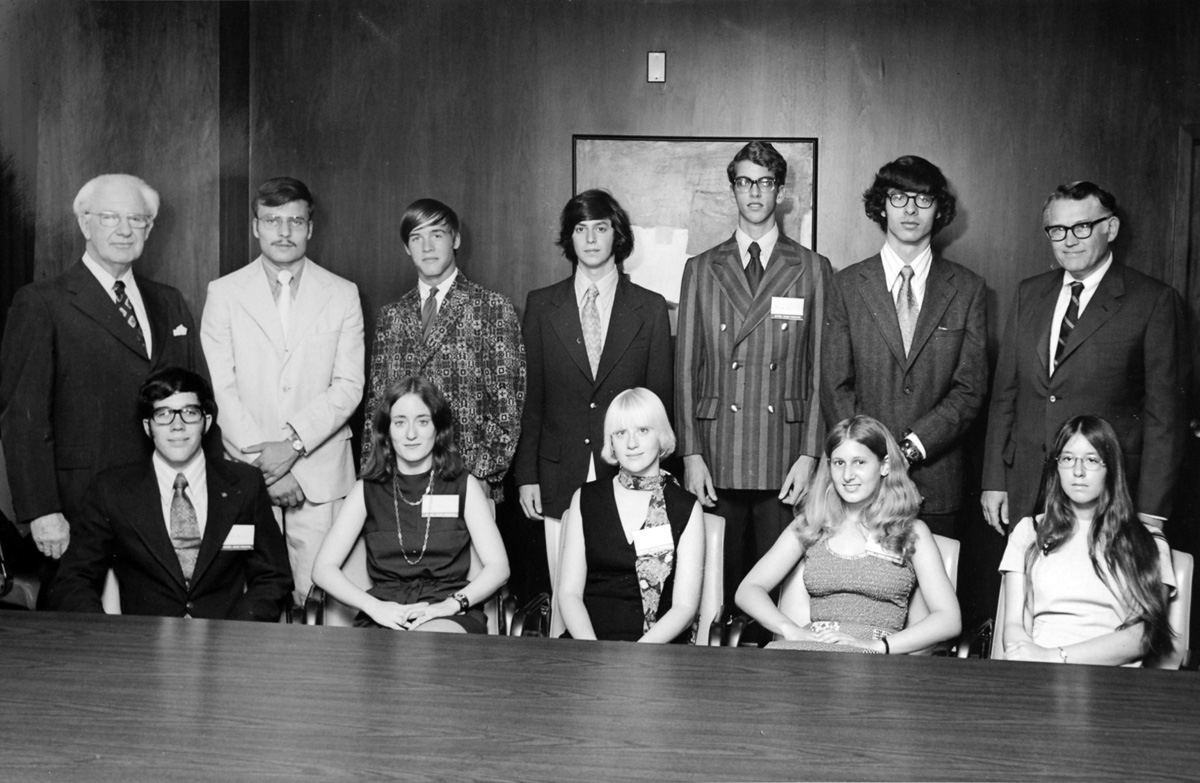
A much better picture was taken in Australia; it includes the British
and Japanese Scholars, as well as all of the chaperones. The
photographer at least understood that laughing, happy subjects more
than compensate for the twit whose head has poked into the lower right
foreground!
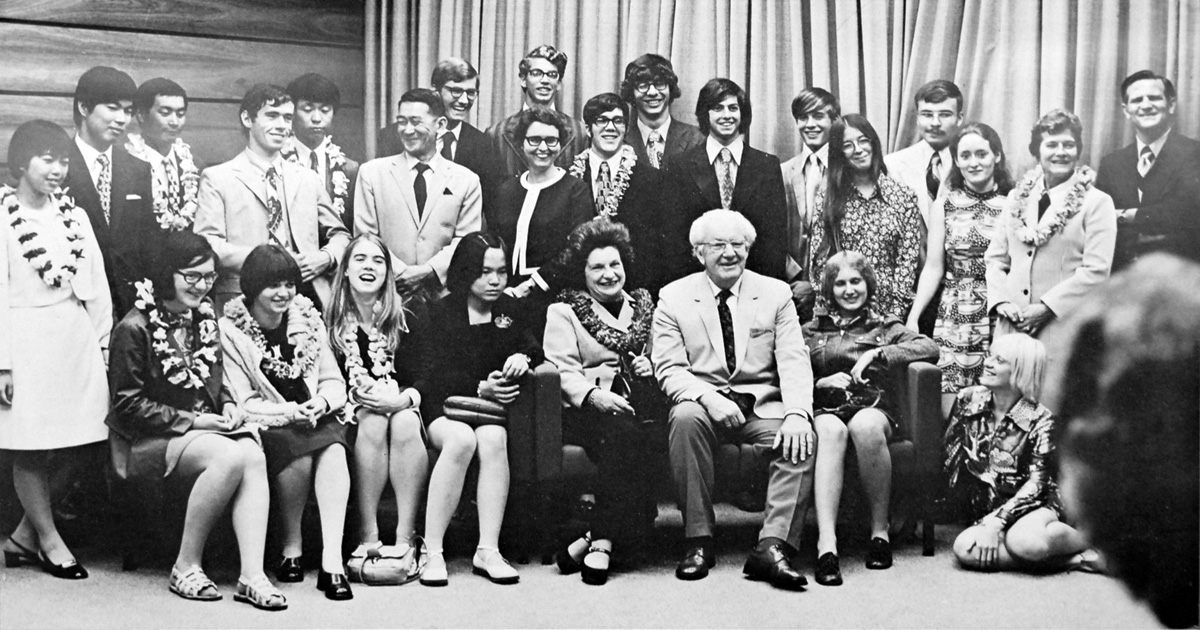
The remaining 30 photographs on this site (selected from 200 taken
on the trip) are a very partial travel log of our visit to Australia and
trip around the world. We visited lots of tourist spots in Honolulu
and the Big Island of Hawaii; Bangkok, Thailand; New Delhi and Agra,
India; and Rome, Italy; but in Australia the scholars were mostly
stuck in Sydney while our chaperones (Mr. and Mrs. Young) traveled
to the Great Barrier Reef!
Unfortunately, all of my photographs were taken with a Kodak Pocket
Instamatic camera, which was very convenient, but had serious optical
limitations and used negatives only one-quarter the size of standard
35 mm film. The resulting photos can never be more than snapshots.
But . . . I learned my lesson, and since that time I have used only
full-sized cameras and suffered the extra weight, even on 25-mile
hikes in National Parks. The original prints are a bit too light,
so for this project I decided to scan the negatives. The negatives
are grainy, and the colors have faded during the past 40 years, but
the worst offenses are the scratches and Moire patterns (the latter
resulting from the sandwiching of the negatives between glass for
scanning). Well, here they are!
The Big Island of Hawaii
After meeting in San Francisco, we took a plane to Honolulu and then
immediately rode an inter-island flight to Hilo. From there we took
a bus to the Volcano House hotel in Hawaii Volcanoes National Park.
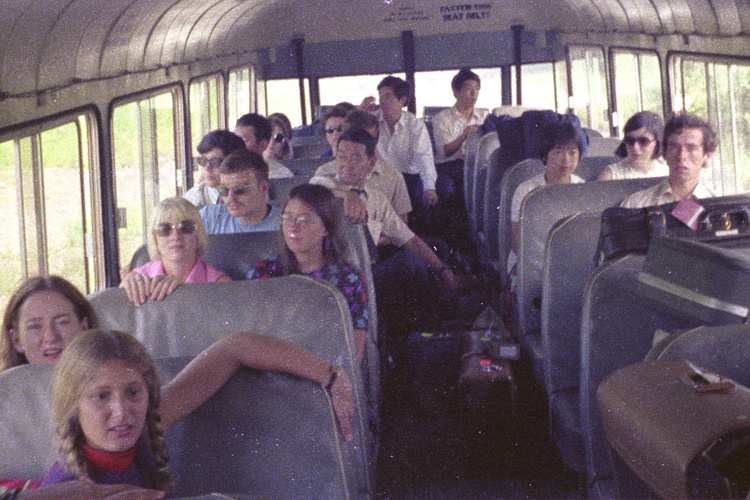
Volcano House, which has been in existence for more than 100 years
(Mark Twain stayed there), has the most spectacular location of any
hotel in the USA: on the edge of Kilauea crater, the most active
volcano in the world! Here is your humble photographer standing just
outside the hotel. (Just for reference, here are photos of
me on the Big
Island in 1985 and 2000.) The smoking crater in the back is Halemaumau,
a half-mile-wide subsidiary crater within the main Kilauea crater,
which is about two miles wide. Occasionally Halemaumau overflows
and adds more lava to the floor of Kilauea. The drop to the crater
floor from Volcano house has become obviously shorter since this
visit in 1972.
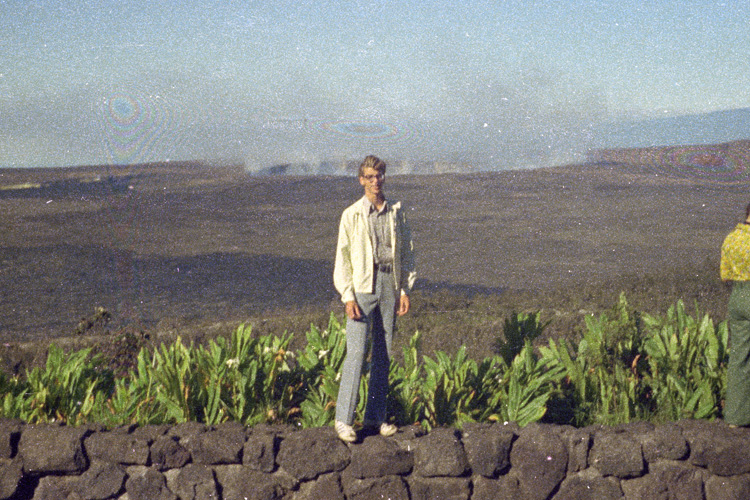
The highlight of the Hawaii trip was a hike to the then-active vent
of Kilauea, Mauna Ulu. The hike was over lava only 90 days old. (I
visited this area again in 2000, and it was covered with vegetation.)
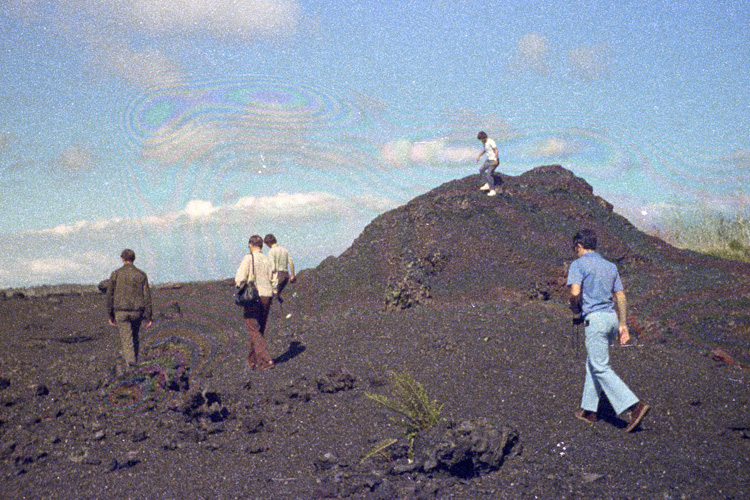
As we approached the site of the eruption, the guide said, "The sound
you hear is not the surf." It was, in fact, the splashing of a river
of lava against the walls of its confining chasm. If I recall
correctly, the chasm was 700 feet deep, but a piece of paper hurled
toward the molten river burst into flame when only half way down!
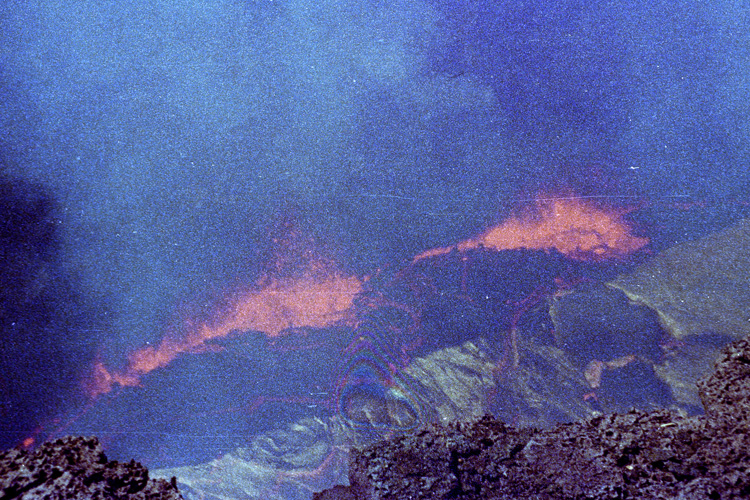
Later on, we visited the Kipuka Puaulu on Mauna Loa. This is an area
where lava has not flowed for a long time, and the vegetation is much
older than in surrounding areas. However, it has been said that
before the volcanoes of the Big Island become extinct, every square
inch of the Big Island will be covered by lava at least once more.
Telescopes on Mauna Kea (dormant for 4500 years), beware!!
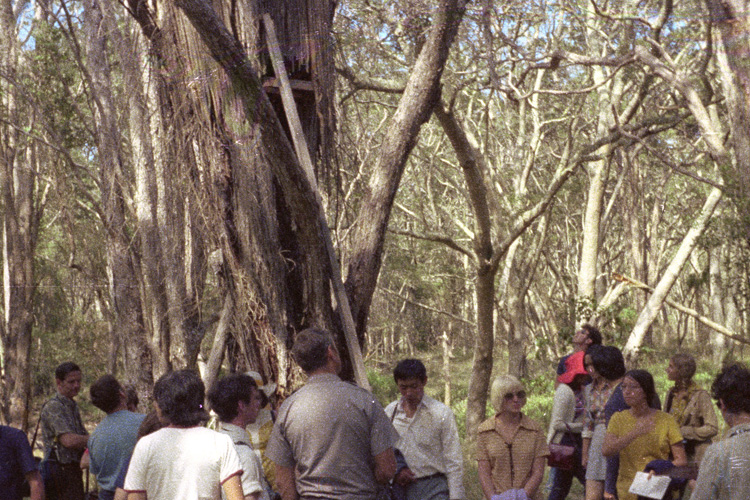
Honolulu, Hawaii
We flew back to Honolulu for a couple of days before departing for
Australia, and basked on Waikiki in the shadow of Diamondhead.

I snapped a picture of the British scholars on the beach, and one
of the Japanese scholars near the hotel gift shop.
British scholars, left to right:
Dorothy Palmer,
Michael Wickstead,
Virginia Alun Jones,
Timothy Sanderson, and
Abigail Fowden.
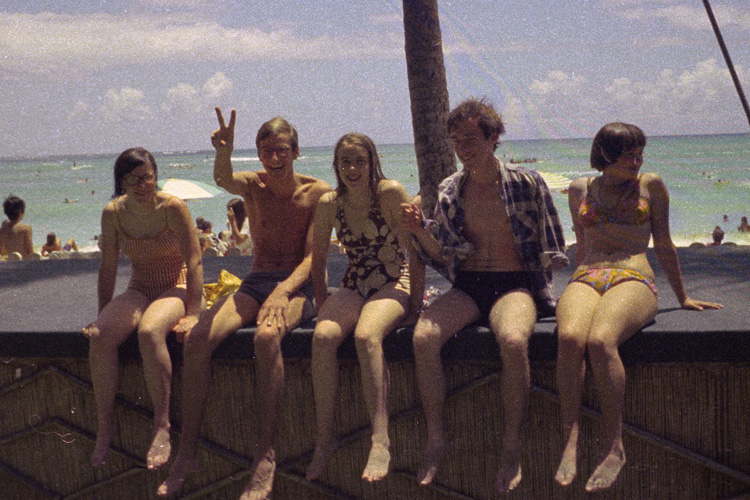
Japanese scholars, left to right:
Hiroshi Maeda,
Yoko Sueoka,
Yoko Jibu, and
Jun-ichi Sato.
Yuji Suda is standing.
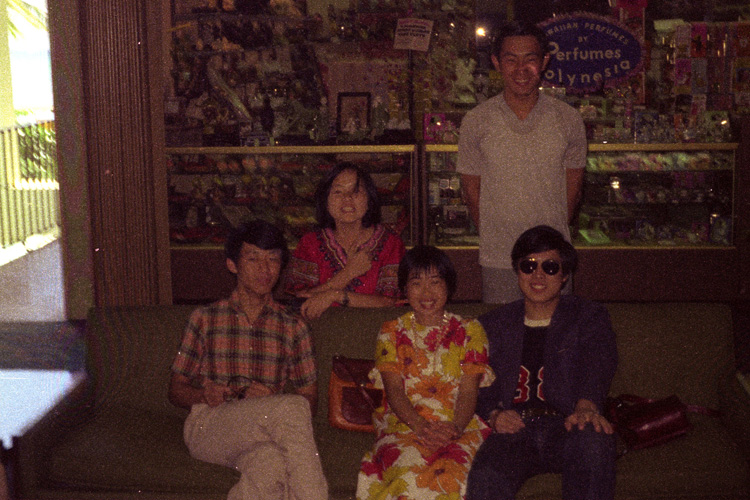
Sydney, Australia
We arrived in Sydney on a Pan Am Boeing 707, which made the softest
landing of any plane that I have ever been on, and the passengers
erupted in applause. Minutes later, I learned from my host that we
had almost overrun the runway, stopping only a few feet from Botany
Bay! My nicest view of Sydney was from the Sydney Church of England
Grammar School (Shore) at sunset. The Harbor Bridge is prominent,
with the Sydney Opera House visible at the far left under the span.
The tall cylindrical building is the Australia Square Tower,
Sydney's first true skyscraper. This photo brings back wonderful
memories, but I really wish that I had had a proper camera!
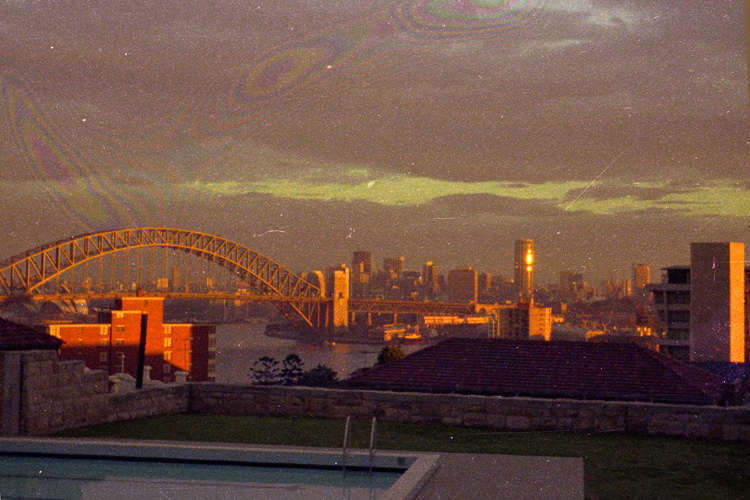
To me the most remarkable natural wonders were not the kagaroos and
koalas and orchids, of which there was no shortage, but rather the
giant Norfolk pines that grew in Sydney, here by the beach. I had
always thought that they were modest indoor potted plants, but these
were indeed giants!
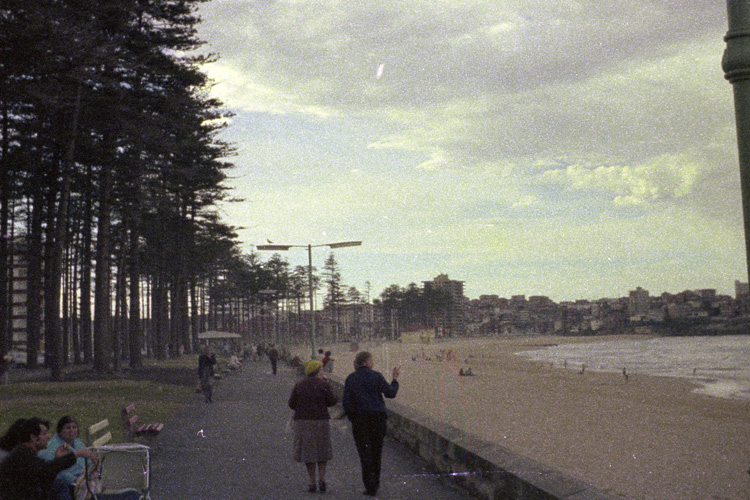
The International Science School consisted of lectures by a series
of scientists working in the subject area of that year's school. Our
topic was rather ominous: "Brain Mechanisms and the Control of
Behavior", but the school was great. Still, I did wonder what it
was like on the Great Barrier Reef while we sat on the hard wood
benches of the lecture hall. The school was nationally televised
in Australia; here is "our" cameraman.
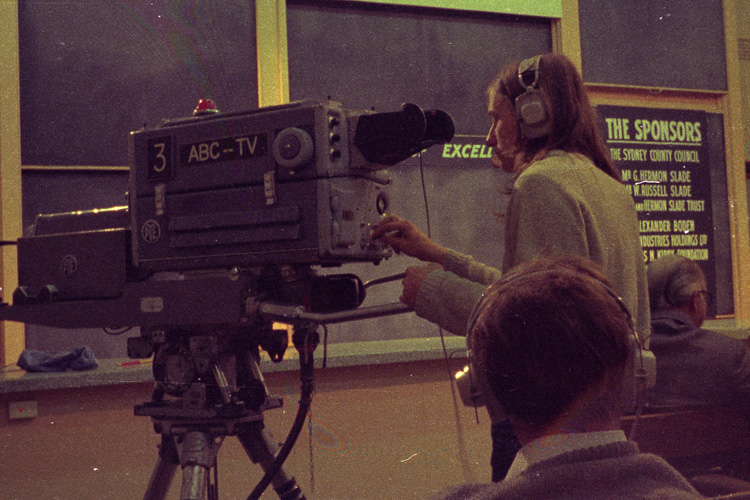
More significantly, here is Professor Harry Messel, founder of the
Science School, who each day thanked the eight Sponsors, one by one.
I can still recite the sponsors instantly and perfectly at a moment's
notice! "And how many large, multi-national corporations do you see
on that board?" said Professor Messel, "Well, I'll tell you -- none!"
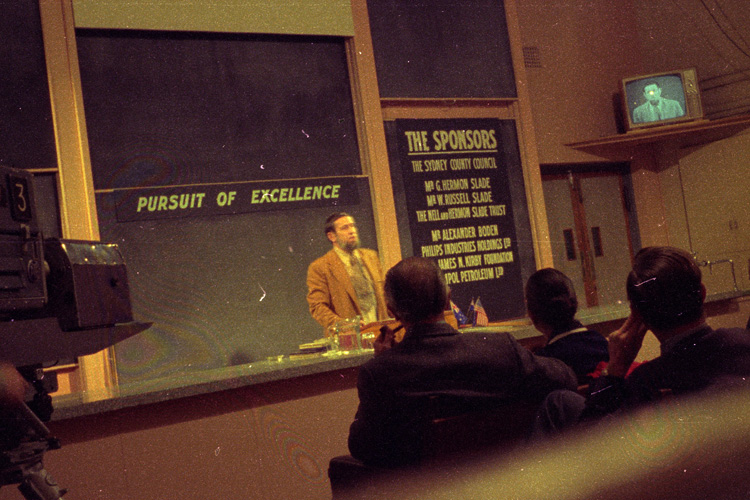
I have not included any photos taken with my hosts, the Duffys, but
they took me on some wonderful expeditions, particularly to be Blue
Mountains. I recall especially the fabulous orchid farms and the
small restaurant where we stopped for lunch, which served absolutely
the best steak I have ever eaten! Regrettably, I have not kept in
touch with Peter Duffy, who also attended the Science School, but
it would be very interesting to know what he is doing now.
Bangkok, Thailand
After the Science School was over, we flew to Bangkok via Singapore.
Bangkok is truly the "Venice of the Orient", and the scenes of life
on the water were especially interesting. The upper photo is just
someone's house with a coconut palm in front; the lower is of "the
floating market". The standard of living did not seem to be
especially high, but in contrast to other less developed countries
that I have visited, almost everyone seemed healthy and happy. Only
two years later, Bangkok would be the setting of the James Bond
adventure "The Man With the Golden Gun"; many of its scenes looked
very familiar to me!
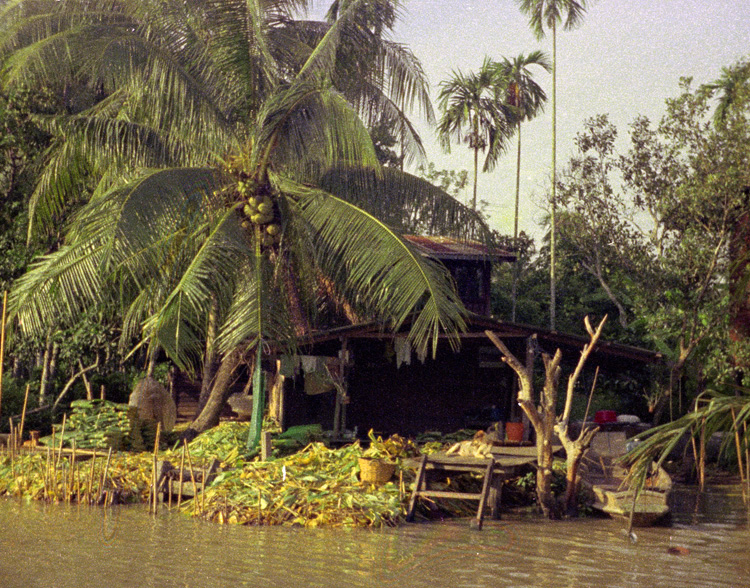
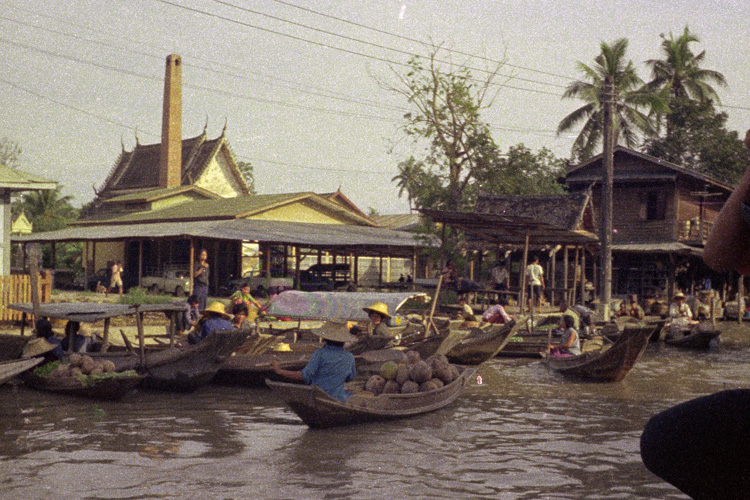
We visited numerous temples and palaces. Here we are outside of Wat
Po, most notable for its giant reclining Buddha, to which innumerable
devotees have pressed small squares of gold leaf as offerings. I
have a rubbing of a carving of a battle scene from Wat Po hanging
in my living room.
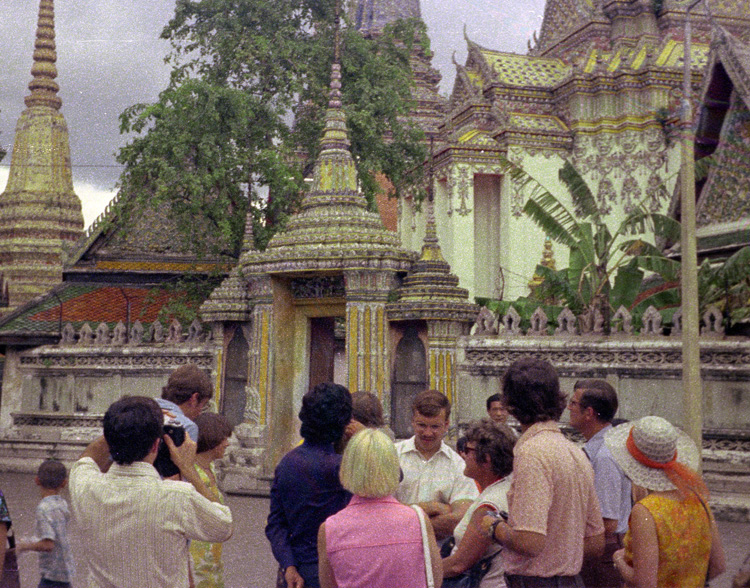
Without question the most spectacular object in Bangkok is the
15-foot-tall, five-ton golden Buddha at Wat Trimitr. This statue
is some 700 years old, but spent several hundred years covered in
clay to disguise its value. The treasure was hidden in plain sight,
but none knew its secret until the monks decided to move the statue
in 1957, and some of the clay chipped off to reveal the gold
underneath!
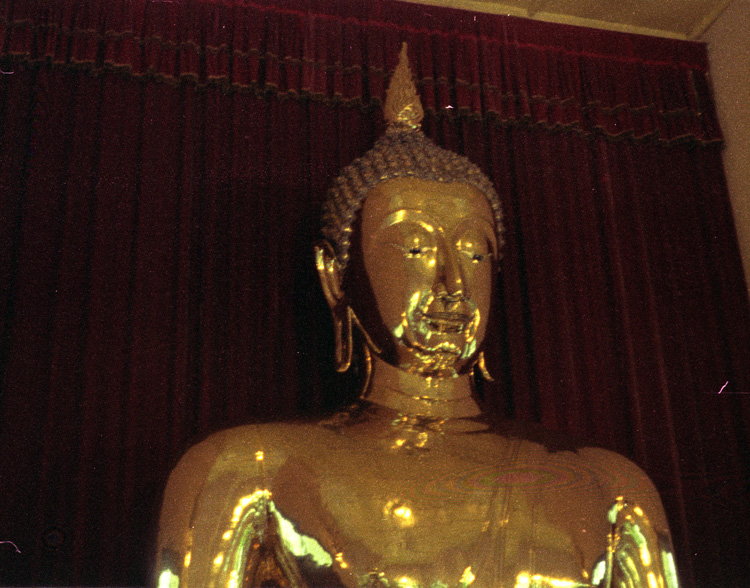
New Delhi, India
New Delhi, with its pressing crowds, massive poverty, and semi-ruined
buildings, stood in stark contrast to Bangkok. Most revealing to
me was the fact that even teenage children of the various
ambassadorial staff (whom we visited) were not allowed to travel
outside the diplomatic compound without an escort. Today, this
would seem a commonplace precaution in almost any country, but in
1972, the risk of assault or kidnapping was negligible in most other
places in the world.
For a chemist, the most remarkable object in New Delhi is the Iron
Pillar near the arches of Rai Pithora. This pillar was fashioned
about 400 AD, and has proved remarkably resistant to corrosion for
1600 years! We were told that it was an (accidental) early example
of carbon stainless steel, but apparently the corrosion resistance
is really due to a layer of crystalline iron hydrogen phosphate formed
from the high-phosphorus wrought iron of the pillar. Times have indeed
changed; if you look at a recent photo of the pillar, it is surrounded
by a fence!
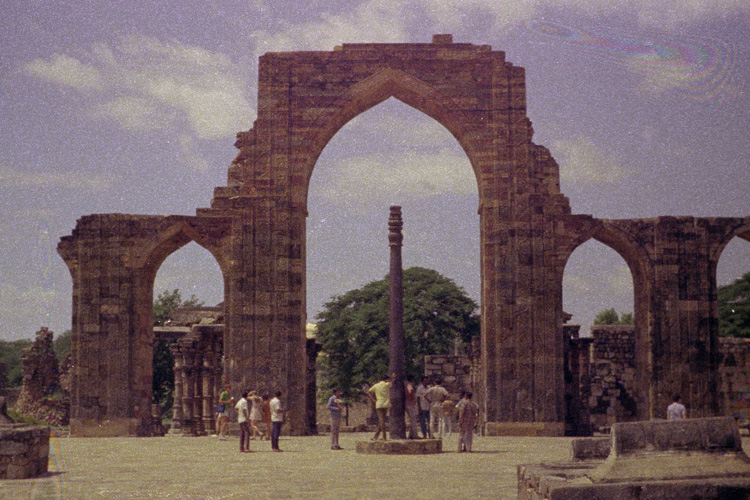
Agra, India
We traveled to Agra on a slow, primitive train that seemed right out
of "The Man Who Would Be King". Sadly, it was a rainy day. Our first
visit was to the famous Red Fort, until then known to me only as an
important setting in Conan Doyle's "The Sign of the Four". It is
indeed a rambling structure with innumerable rooms and halls as
described in the Sherlock Holmes story.
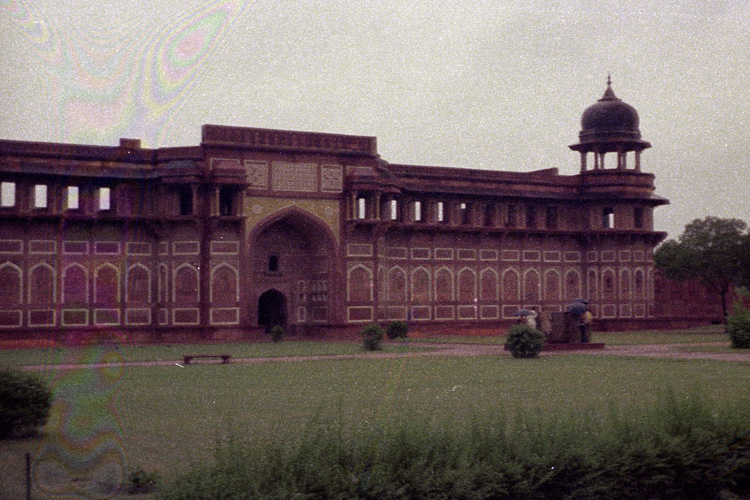
Here is a view from the Red Fort toward the Taj Mahal, which is barely
visible in the center of the photo. This scene captured much of what
I felt while in India.
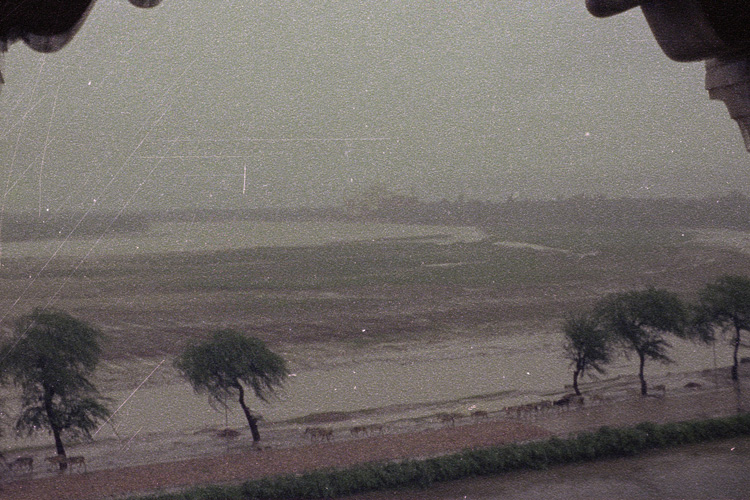
Even in the rain, the Taj Mahal loses little of its lustre.
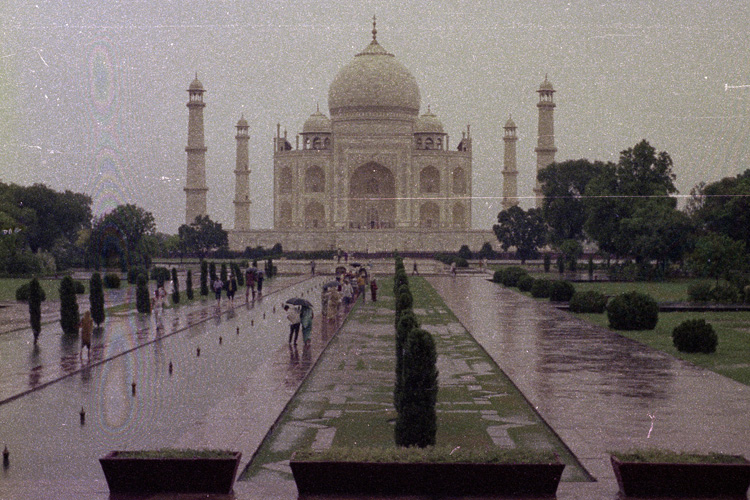
However, the smaller, darker "outhouses" next to the Taj Mahal made
everyone wonder whether the Taj would have been more spectacular in
black marble!
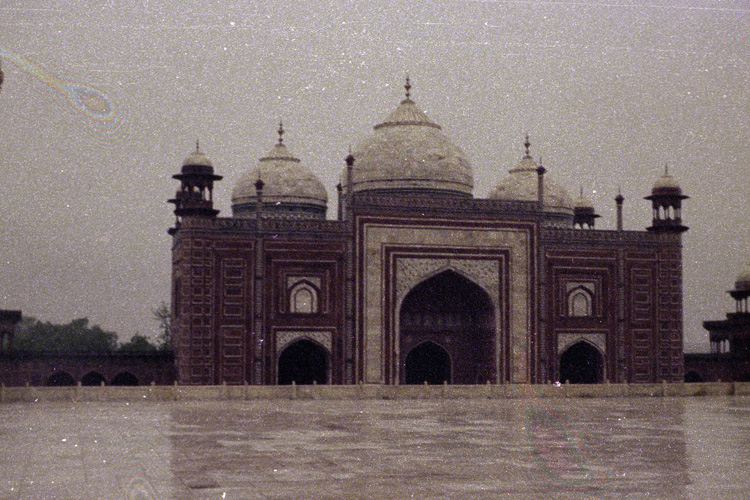
Rome, Italy
We flew to Rome via Beirut; even then, long before the Lebanese civil
war, the plane was surrounded by submachine gun-wielding guards on
the tarmac at Beirut. I had lived in Rome for a year when I was 9-10
years old, so it was a homecoming for me. I pushed hard to see as
much as possible once again.
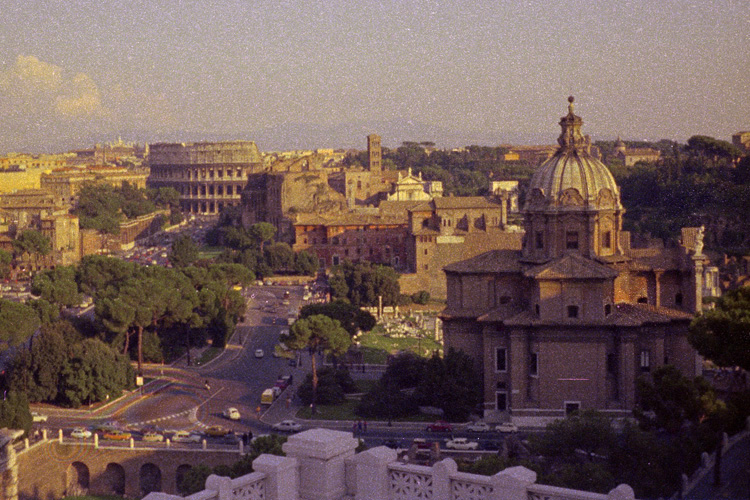
Here we are at the Forum.
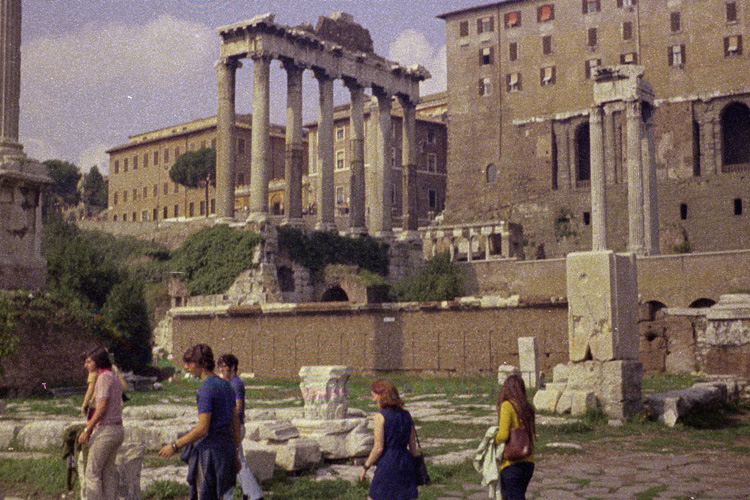
And at a cafe near the Colosseum.
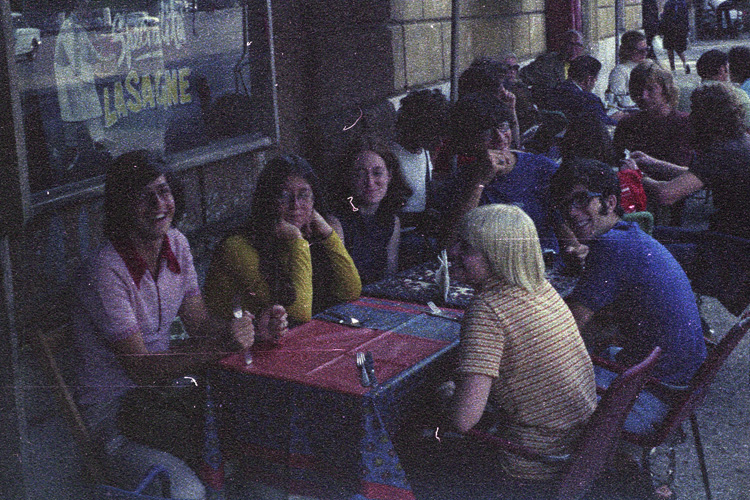
Fontana Trevi was on the schedule.
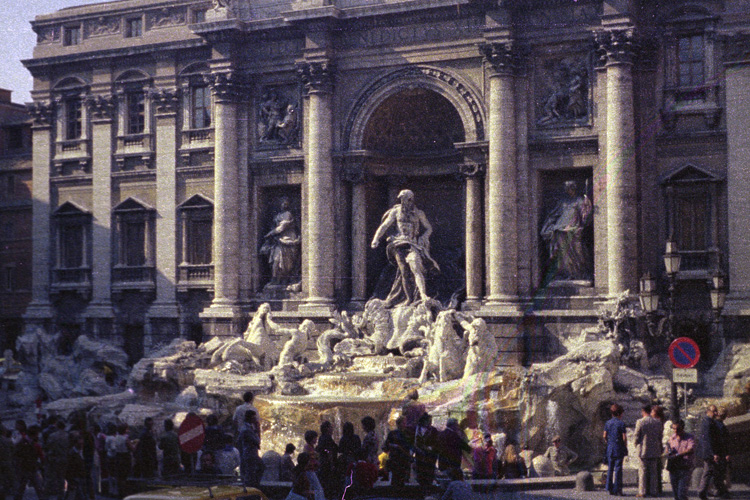
Leslie and Kathy tossed in the requisite coins!
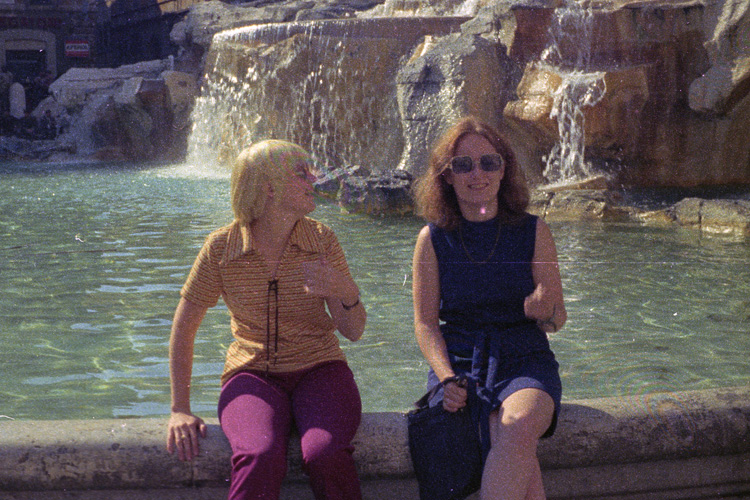
I believe that the last day was spent at the Vatican. Here is St.
Peter's Square.
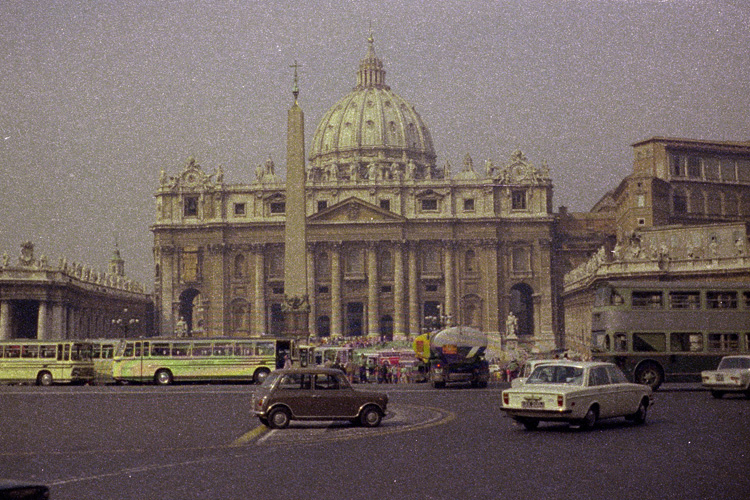
Here are the Youngs at St. Peter's.
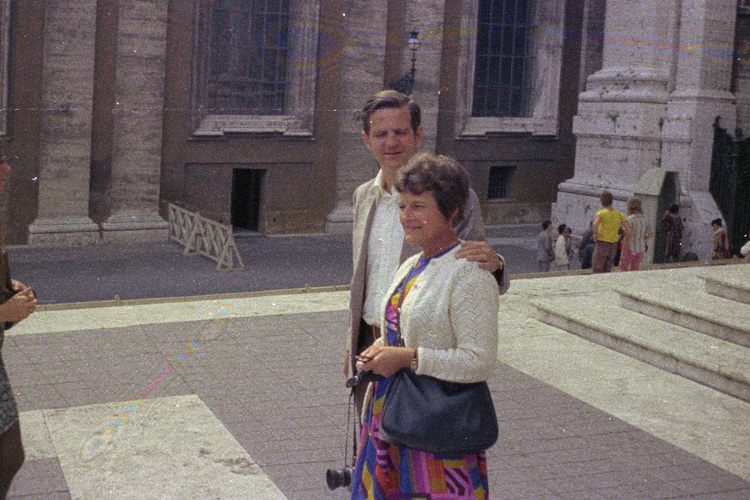
I was much younger and thinner: 6' 3'' and 145 lbs as opposed to 6'
3" and 200 lbs today! I wonder what Len looks like?
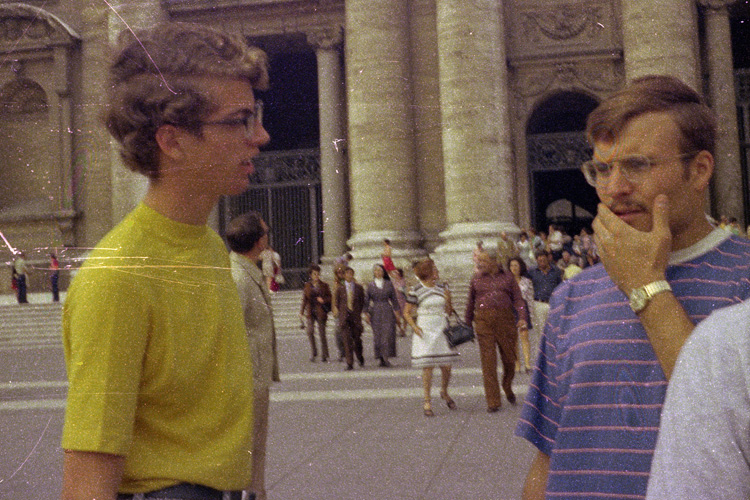
Finally, here is most of the crew on the steps of St. Peter's.
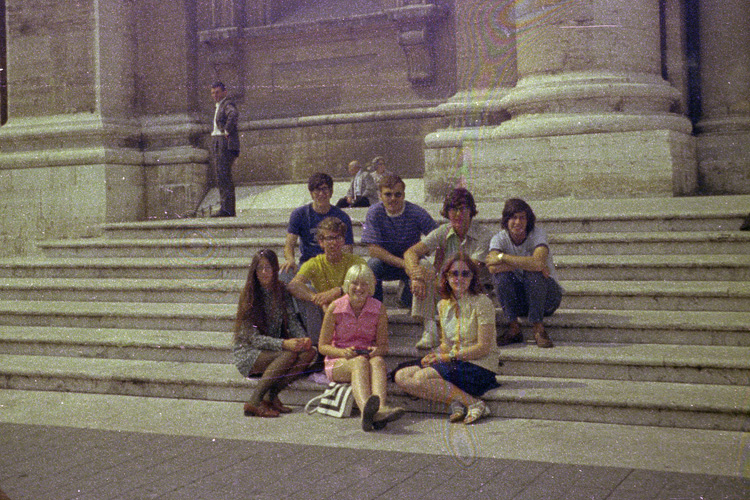
We returned to New York and split up after a month of travel. It was
an amazing trip! THANKS, NSF!!































